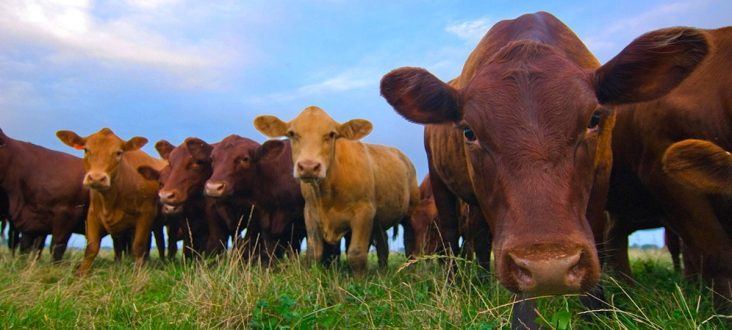Cattle producers take major hit
by April 1, 2020 1:16 pm 1,016 views

One of Arkansas’ leading agricultural industries is taking a direct hit from the COVID-19 outbreak. Cattle producers are feeling the strain as unprecedented unemployment and consumer uncertainty have rattled the financial markets.
Live cattle contracts lost 25% of their value between mid-January and the third week of March, with most of the drop coming after mid-February.
“We’ve all been impacted, and we’re in uncharted waters,” said Michael Looper, professor and head of the Department of Animal Science for the University of Arkansas System Division of Agriculture.
Looper and other experts with the Division of Agriculture and the Arkansas Cattlemen’s Association recently connected with nearly 200 cattle producers in an online webinar to discuss the impacts of COVID-19 on the cattle industry and offer guidance for navigating an unpredictable future. For the most part, cattle futures have taken cues from outside markets, with losses in cattle futures correlating with losses in the broader financial markets.
“The short-term markets are being whipsawed right now,” said John Anderson, head of the Department of Agricultural Economics and Agribusiness with the Division of Agriculture. “The bigger issue this spring with COVID-19 was behavior of the cattle futures market. Money was running scarce, and live cattle futures were caught up in that dynamic. When you have futures prices dropping more rapidly than the cash price, that puts feedlot managers in a poor negotiating position.”
Market fundamentals were also worse than expected in the first quarter, even without the pandemic. According to USDA figures, beef production was up 6.7% in the first quarter compared to a 7.9% increase for pork and 8.3% for broilers.
“If the COVID-19 outbreak has abated in the next month or so, the rebound in markets could be relatively quick, especially if support from the supply side of the market does materialize in the latter half of the year,” Anderson said.
COVID-19 spurred panic buying as consumers rushed to stock up on meat and other staples, draining the supply and causing a run-up in wholesale prices.
“Panic buying is not the same thing as an increase in demand,” Anderson said. “It might look like it, but it’s really not. Essentially, it is pulling demand from later periods ahead to today. It creates a short-term shortage.”
That shortage has been seen at grocery stores as well as in disruptions to the restaurant trade, which accounts for about half of beef consumption.
“Retailers and packers are working hard to refill supply chain after this spate of panic,” Anderson said. “Processors are thinking ahead to what will happen with supply chain disruptions if people can’t work, if the supply chain shuts down, or if we can’t get workers in place.”
If restaurants reopen, the market could rebound. If closures continue for another few months, consumers will need time to rebound financially and recover from drawing down their savings.
“It’s all highly dependent on how long we stay closed,” Anderson said. “The numbers are sobering to look at. This is the kind of thing that will contribute to negative impacts on the industry.”
In downturns, consumers tend to seek products at the lower end of the price scale. Beef, however, doesn’t have extensive low-cost product offerings. The second half of 2020 is expected to fare better in supply, but beef production overall is expected to be down a couple of percentage points, Anderson said.
Jody Almand, senior credit analyst with Farm Credit of Western Arkansas, said producers have some options if they find themselves in a financial shortfall.
Producers can extend a payment for a period of 30, 60 or 90 days. A payment extension is usually a one-time occurrence and is sometimes the best fix for a short-term problem. Cattle farmers can re-amoritize a payment, or REAM for short, which allows a producer make a partial loan payment with the difference added to the end of the loan. In some instances, the maturity can be extended in exchange for lower payments. Another option is to rebalance the loan, similar to a refinance or debt restructuring. A rebalance spreads debt over a longer term, lowering payments if needed.
Beef is typically the fifth largest ag sector in Arkansas. It’s a nearly $1 billion industry in the state with about 24,000 farms. Roughly, 5.6 million acres is utilized in the industry, according to the Arkansas Farm Bureau.
